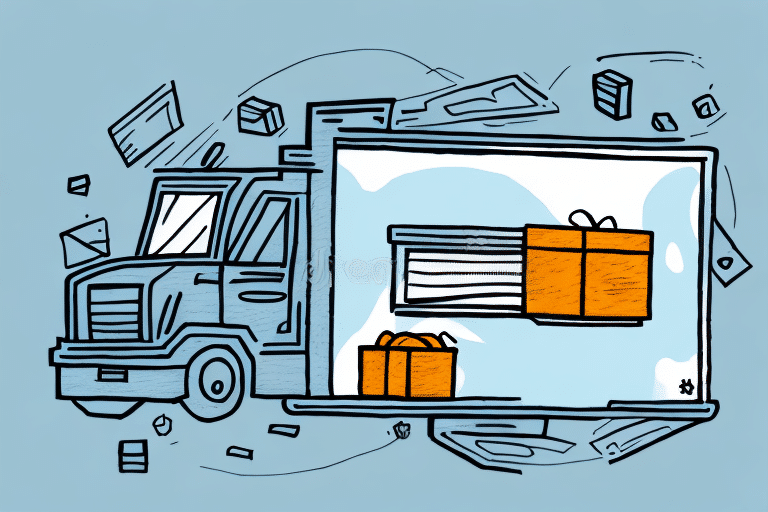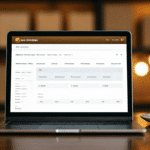How to Craft a Competitive Delivery Promise for Your Ecommerce Store
As an ecommerce store owner, one of the most critical aspects of your business is providing your customers with a delivery promise that sets you apart from your competitors. A competitive delivery promise can help you boost customer satisfaction and loyalty, drive more sales, and increase your revenue. In this article, we'll delve into the details of how you can craft a delivery promise that gives you an edge in the ecommerce landscape.
Why a Competitive Delivery Promise is Essential for Your Ecommerce Store
Customers shopping online don't just want their orders fulfilled. They want their orders delivered quickly, efficiently, and with minimal hassle. According to a Statista report, delivery speed is one of the top factors influencing customer satisfaction and repeat purchases. A competitive delivery promise can set you apart from your competitors and give you an edge in the crowded ecommerce landscape. It can help you attract and retain customers, improve your brand image, and drive more revenue over time.
- Enhances customer satisfaction and loyalty
- Differentiates your brand from competitors
- Increases conversion rates and sales
- Improves overall brand reputation
One way to offer a competitive delivery promise is to partner with a reliable shipping carrier that can deliver your products quickly and efficiently. Additionally, offering free or discounted shipping can incentivize customers to make a purchase. Providing customers with real-time tracking information allows them to monitor the progress of their delivery and plan accordingly.
It's important to note that a competitive delivery promise is not just about speed. It's also about providing a seamless and hassle-free delivery experience. This includes ensuring that products are packaged securely, providing clear and accurate delivery information, and offering flexible delivery options that cater to the needs of your customers.
Understanding Your Customers' Delivery Expectations
The first step in crafting a competitive delivery promise is to understand your customers' delivery expectations. Conducting customer surveys or analyzing your order history can provide valuable insights into your customers' needs and preferences. For instance, a Salesforce survey found that 80% of consumers are more likely to purchase from a brand that offers same-day or next-day delivery.
Segmenting by Location
Customers in different regions or countries may have varying expectations regarding delivery times and shipping options. For example, customers in urban areas often expect faster delivery times compared to those in rural areas. Additionally, international customers may be concerned about customs and import regulations that can affect delivery times and costs.
Product-Specific Expectations
The type of products you sell also influences delivery expectations. Customers purchasing perishable goods may require expedited shipping, while those buying non-perishable items may prioritize cost over speed. High-value items typically necessitate more secure and reliable shipping options compared to low-value items.
Analyzing Your Competitors' Delivery Promises
To craft a competitive delivery promise, it's essential to analyze your competitors' delivery strategies. Monitor their websites, social media channels, and promotional materials to understand how they market their delivery options. Pay attention to the following aspects:
- Delivery Times: What are their standard and expedited delivery options?
- Guarantees: Do they offer guarantees or compensation in case of delays?
- Delivery Methods: Do they use third-party services, or do they have their own logistics fleet?
For example, Amazon offers a range of delivery options, including same-day and next-day delivery for Prime members, which sets a high standard in the industry.
Identifying Market Gaps
By understanding your competitors' strengths and weaknesses, you can identify gaps in the market. This allows you to develop a unique delivery promise that better meets your target audience's needs.
Factors to Consider When Crafting a Competitive Delivery Promise
Several key factors must be considered to develop an effective delivery promise:
Shipping Zones and Costs
If you operate in multiple regions or countries, it's crucial to understand the shipping requirements and costs for each area. Partnering with local carriers can help reduce shipping times and costs.
Packaging Materials
Using high-quality packaging ensures that products arrive in good condition. This not only reduces returns but also enhances the customer experience.
Order Processing Time
Efficient order processing is vital for meeting delivery promises. Implementing automation tools can help speed up this process.
Tracking and Communication
Providing real-time tracking information and proactive communication about any delays builds trust and keeps customers informed.
Customer Support
Having a responsive customer support system in place to handle inquiries and issues related to delivery ensures a positive customer experience.
Tips to Improve Your Delivery Speed and Efficiency
Enhancing delivery speed and efficiency can significantly impact your competitive edge. Here are some strategies:
Invest in Automation Technologies
Automation can streamline order processing, inventory management, and shipping operations, reducing errors and speeding up fulfillment.
Partner with Reliable Carriers
Collaborating with trusted shipping partners ensures timely and safe delivery of your products.
Utilize Real-Time Tracking
Implementing real-time tracking systems allows both you and your customers to monitor the progress of shipments, improving transparency.
Optimize Packaging Strategy
Using the right packaging materials and optimizing package sizes can reduce shipping costs and improve delivery times.
Route Optimization
Using route optimization software can help plan the most efficient delivery routes, reducing time and fuel costs. For example, companies like Route4Me offer solutions to optimize delivery routes effectively.
Offer Expedited Shipping Options
Providing same-day or next-day delivery options can be a significant selling point, especially for customers needing items urgently.
Offering Free Shipping vs. Charging for Shipping: Which is Better?
Deciding whether to offer free shipping or charge for it is a critical decision that can impact your sales and profitability.
Advantages of Free Shipping
- Attracts more customers
- Increases average order value by encouraging larger purchases
- Enhances customer satisfaction and loyalty
Challenges of Free Shipping
- Can reduce profit margins
- Requires careful calculation to ensure sustainability
Advantages of Charging for Shipping
- Maintains profit margins
- Allows for flexible shipping options without absorbing costs
Strategies to Balance Both
Consider offering free shipping on orders above a certain value to encourage higher spending. Additionally, negotiate better rates with carriers or offer flat-rate shipping to simplify the checkout process.
According to a Barclays study, 76% of consumers are more likely to shop again with a retailer that offers free shipping, making it a compelling option to consider.
How to Communicate Your Delivery Promise to Customers
Effectively communicating your delivery promise is essential to ensure customers understand and trust your service. Utilize various channels to convey this information:
Homepage and Product Pages
Highlight your delivery options prominently on your website to set clear expectations from the outset.
Email Campaigns
Use email marketing to inform customers about your delivery policies, special shipping offers, and any updates to your services.
Social Media
Leverage social media platforms to announce and reinforce your delivery promises, engaging with customers through posts and stories.
Packaging Materials
Include delivery information and tracking details in your packaging to keep customers informed even after their order has shipped.
Real-Time Updates
Provide automated email or text notifications to keep customers updated on their order status, including shipment, out-for-delivery, and delivery confirmation.
The Importance of Tracking and Transparency in Delivery
Transparency in the delivery process builds trust and enhances the customer experience. Providing real-time tracking and regular updates on order status can significantly increase customer satisfaction.
Benefits of Real-Time Tracking
- Reduces customer anxiety about order status
- Decreases the number of support inquiries regarding deliveries
- Enhances overall transparency and trust
Integrate tracking systems that allow customers to monitor their orders easily. Tools like AfterShip offer customizable tracking solutions that can be seamlessly integrated into your ecommerce platform.
Dealing with Delivery Delays and Issues: Best Practices
Despite your best efforts, delivery delays and issues can occur. Having a robust plan to address these situations is crucial for maintaining customer trust and satisfaction.
Clear Refund and Exchange Policies
Establish and communicate clear policies regarding refunds and exchanges in case of delivery delays or issues.
Proactive Communication
Inform customers promptly about any delays or problems with their orders. Transparency can mitigate frustration and maintain trust.
Responsive Customer Service
Ensure your customer service team is well-trained to handle delivery-related inquiries and resolve issues efficiently.
Compensation for Delays
Consider offering compensation, such as discounts or free shipping on future orders, to affected customers as a gesture of goodwill.
According to a Help Scout report, 70% of customers are more likely to return to a company that responds quickly to their issues.
Leveraging Technology to Enhance Your Delivery Promise
Embracing technology can significantly enhance your delivery promise by improving speed, accuracy, and customer satisfaction.
Automation Tools
Implementing automation in order processing and inventory management can reduce errors and speed up fulfillment.
Barcode Scanners and RFID
Using barcode scanners and RFID technology can improve inventory tracking and order accuracy, ensuring timely deliveries.
Real-Time Tracking Systems
Integrate advanced tracking systems that provide both you and your customers with real-time updates on order status.
Data Analytics
Utilize data analytics to monitor delivery performance, identify bottlenecks, and optimize your logistics operations.
Adopting technologies like Shopify's automation tools can streamline your delivery processes and enhance overall efficiency.
Monitoring and Evaluating the Success of Your Delivery Promise Strategy
Continuously monitoring and evaluating your delivery promise strategy is essential to ensure its effectiveness and make necessary adjustments.
Key Performance Indicators (KPIs)
- Average Delivery Time: Measures the average time taken to deliver orders.
- On-Time Delivery Rate: Percentage of orders delivered on or before the promised date.
- Order Cancellation Rate: Percentage of orders canceled due to delivery issues.
- Customer Satisfaction: Feedback and ratings related to the delivery experience.
Regular Assessments
Conduct regular assessments of your delivery performance using the identified KPIs. This helps in identifying areas for improvement and adjusting your strategies accordingly.
Customer Feedback
Encourage customers to provide feedback on their delivery experience. Use this information to make informed decisions and enhance your delivery services.
According to a Qualtrics study, businesses that actively seek and act on customer feedback see a 10-15% increase in customer satisfaction.
Common Mistakes to Avoid When Crafting a Competitive Delivery Promise
While crafting a competitive delivery promise, it's crucial to avoid common mistakes that can hinder your success:
- Underestimating Shipping Costs: Failing to accurately calculate shipping costs can lead to reduced profit margins.
- Overpromising and Under-Delivering: Making unrealistic delivery promises can damage your brand's reputation.
- Using Unreliable Carriers: Partnering with unreliable shipping carriers can result in delayed or lost orders.
- Neglecting Tracking Needs: Not providing adequate tracking information can frustrate customers and increase support inquiries.
Avoiding these mistakes helps in building a delivery promise that meets your customers' needs and establishes your ecommerce store as a market leader.
Staying Ahead of the Competition: Continuously Improving Your Delivery Promise
To stay ahead of the competition, it's essential to continuously improve your delivery promise. This involves regularly analyzing market trends, optimizing delivery processes, embracing new technologies, and prioritizing customer satisfaction.
Analyze Market Trends
Stay informed about the latest trends in ecommerce and delivery services. This allows you to adapt your strategies to meet evolving customer expectations.
Optimize Delivery Processes
Regularly review and refine your delivery processes to enhance efficiency and reduce costs.
Embrace Technological Advancements
Adopt new technologies that can improve your delivery services, such as AI-driven logistics solutions and automated warehouses.
Prioritize Customer Satisfaction
Continuously seek feedback and make necessary adjustments to ensure that your delivery promise aligns with customer needs and preferences.
By treating your delivery promise as a dynamic strategy rather than a one-time plan, you can maintain a competitive edge in the ever-evolving ecommerce landscape.
Conclusion
Crafting a competitive delivery promise is crucial for your ecommerce store. It can help you drive more sales, attract and retain customers, and improve your brand reputation in the industry. By understanding your customers' expectations, analyzing competitors, leveraging technology, and continuously improving your delivery processes, you can develop a unique and effective delivery promise that meets your customers' needs and sets you apart from your competitors.






















